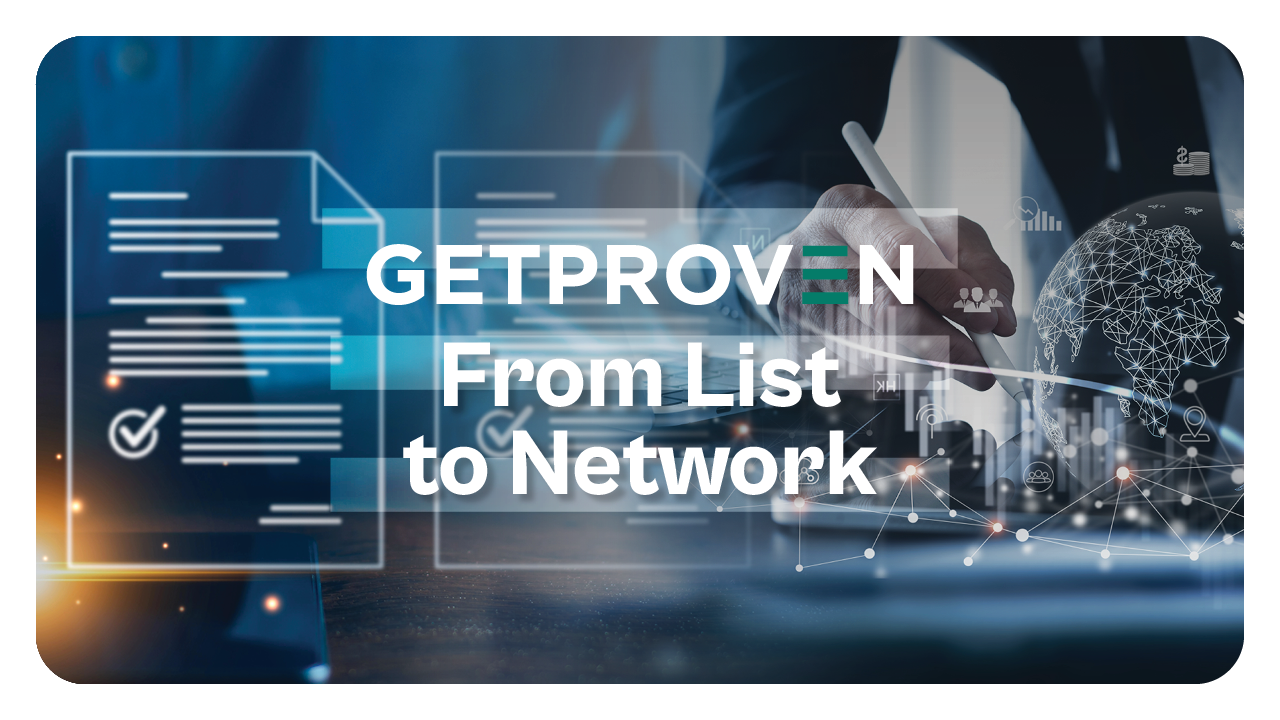
How Banks Are Utilising Web Platforms To Build Loyalty, Award Discounts and Recommend Vendors to their Client Base.

Community and regional banks are under increasing pressure to stay relevant in a highly competitive SME landscape. Fintech challengers and digital-first platforms have redefined the customer experience, leaving traditional institutions struggling to maintain customer loyalty.
Today’s small and medium-sized businesses expect more than just banking—they expect value-added services, seamless digital interactions, and ecosystem-level support.
In response, forward-thinking banks are leveraging digital channels and platforms to deliver exclusive vendor discounts, promote B2B networking, and integrate advisory tools. This article explores how banks are deploying loyalty-driving web platforms and how solutions like Proven are reshaping the way banks deliver value to their SME clients.
Why Digital Platforms Matter in SME Banking
According to Deloitte, over 60% of SMEs would consider switching banks for better digital tools and value-added services. This statistic underscores a major shift: SMEs no longer see banks as just financial institutions—they view them as potential partners in growth.
In a climate where customer retention is tied to long-term profitability, digital loyalty platforms present a win-win strategy.
Strategic Advantages of Digital Loyalty Platforms:
- Extend banking beyond transactions by offering relevant deals, advisory services, and business training, helping clients operate more efficiently.
- Strengthen brand affinity by delivering tangible savings, time-saving resources, and personalized experiences—factors that build long-term loyalty.
- Create new revenue streams through curated partnerships with third-party vendors and service providers that pay for visibility and referrals.
- Differentiate the bank’s value proposition by positioning the institution as an ecosystem enabler, not just a lender or depository service.
These platforms act as loyalty engines—embedding the bank more deeply into the daily operations of small business customers and increasing their lifetime value. In fact, according to Accenture, banks that deliver ecosystem services can increase client engagement by 20-30%, while reducing churn by over 25%.
Building Loyalty with Exclusive Business Discounts
Banks that integrate discount platforms into their digital ecosystem are going beyond traditional transactional relationships. By offering exclusive, pre-negotiated offers on essential business tools—ranging from accounting software and cloud storage to HR and marketing platforms—they signal that they understand and support the broader needs of SME clients.
These discounts aren’t just a nice-to-have; they are a strategic tool for reinforcing trust, boosting retention, and positioning the bank as a true business partner. According to a Salesforce survey, 84% of SMEs say the experience a company provides is as important as its products and services. Providing meaningful financial relief through business-critical discounts elevates the overall client experience.
Example: A bank offering 30% off QuickBooks or 6-month free access to Gusto HR services delivers real, quantifiable value to SME clients managing lean budgets and tight margins.
Real-world Impact: Bain & Company reports that improving customer retention by just 5% can increase profits by 25% to 95%, making loyalty a direct path to profitability.
Unlike banks that merely publish a static list of deals, successful institutions deploy centralized, curated marketplaces that are embedded within their online banking interface.
These marketplaces are tailored, searchable, and dynamic—built to continuously reflect changing client needs and evolving with business tools.
To maximize loyalty, banks can:
- Automatically recommend offers based on past customer data (e.g., a customer’s industry or transaction history).
- Bundle offers with onboarding to increase adoption and immediate value.
- Rotate seasonal or limited-time deals to create urgency and engagement.
Ultimately, offering exclusive discounts via a digital platform becomes more than a perk—it becomes a strategic extension of the bank’s loyalty program and brand promise.
Attracting New Clients Through Value-Added Ecosystems
In today's increasingly competitive financial services landscape, SMEs are choosing banking partners not solely based on interest rates or fees, but on the total value the institution can deliver.
They want a partner that understands their needs, provides ongoing operational support, and helps them grow. A digital platform that enables SMEs to save money, discover new vendors, and streamline operations is not only attractive—it’s a differentiator and represents the future of SME banking platforms.
Value-added ecosystems are particularly powerful during the onboarding process. When a prospective client sees that your bank offers a tailored ecosystem of pre-vetted tools, services, and support networks, it signals that you’re invested in their long-term success.
- Promote the platform in every SME onboarding journey—from welcome emails to account setup walkthroughs.
- Include a “Business Welcome Kit” with immediate access to curated discounts, onboarding tutorials, and vendor recommendations.
- Use client success stories and video testimonials to build credibility and demonstrate real-world impact.
According to a report by EY, SMEs that receive bundled value-added services from their banks are 3X more likely to consolidate all financial relationships with that provider. This means the ecosystem doesn’t just win new clients—it fosters deeper, more profitable relationships over time by providing an integrated platform that caters to various needs.
By positioning your bank as a growth partner—not just a service provider—you gain both an acquisition and retention advantage in a crowded market.
See how much your bank can save money for your SMEs with our savings calculator.
Cultivating an SME-to-SME Network
A digital platform is more than a listing—it’s a community engine that fosters trust, visibility, and cross-pollination among local businesses. By showcasing SME clients as verified service providers—accountants, legal advisors, marketing consultants, logistics firms—banks can help their customers generate leads, increase exposure, and build peer-to-peer partnerships.
This network effect enhances loyalty on both sides: the service provider gains visibility through the bank’s platform, and the client receiving the service benefits from trusted referrals within a vetted ecosystem.
Example: An accounting firm in your client portfolio can be listed as a verified partner on the platform, complete with service descriptions, pricing packages, client reviews, and direct booking functionality.
A business searching for financial advisory services or HR consulting can easily browse this ecosystem, make a selection, and connect with a fellow SME—without leaving the bank’s digital platform.
Benefits for Banks:
- Facilitates deeper engagement with business clients by aligning with their growth needs.
- Positions the bank as a relationship orchestrator, not just a financial provider.
- Enhances retention and trust, as SMEs grow their businesses through community referrals initiated by the bank.
In fact, according to BCG, banks that adopt an ecosystem approach and connect customers to other services and providers see a +20% boost in NPS (Net Promoter Score) and higher cross-product penetration.
As McKinsey notes, the future of SME banking lies in ecosystem orchestration—not just product delivery. The more SMEs that participate in this network, the more valuable the platform becomes for all involved, creating a flywheel of engagement, trust, and mutual growth.
Personalization and Data-Driven Offers
A modern loyalty platform powered by first-party and behavioral data as well as digital technology allows banks to go beyond generic promotions. Banks can dynamically personalize offers based on a client’s industry, company size, geographic location, digital engagement behavior, purchase history, and even more advanced analytics like lifecycle stage.
- A retail SME might be shown discounted POS systems and local inventory management tools.
- A consulting firm could receive HR platform promotions or access to premium digital collaboration software.
- A startup might be served cloud storage credits, free legal consultations, or business incorporation services.
According to a 2023 Salesforce SMB Trends report, 74% of small business owners say they are more likely to engage with companies that offer personalized experiences. This level of personalization boosts both relevance and perceived value—two key drivers of loyalty.
Banks can further enhance this with machine learning models that:
- Score engagement with previous offers and predict future interest.
- Automatically surface high-conversion deals based on firmographic and behavioral profiles.
- Trigger follow-up campaigns when an offer is redeemed or abandoned.
Moreover, by tracking offer views, click-throughs, redemptions, and conversion timelines, banks gather critical intelligence to refine segmentation, adjust deal placement, and optimize campaign timing. This creates a feedback loop that improves with every interaction.
Ultimately, personalization makes the loyalty platform feel like a curated concierge service, elevating the bank’s role from vendor to trusted growth partner.
Challenges and Considerations for Banks
While the benefits are clear, implementation comes with important considerations and its fair share of challenges, including:
a. Vendor Vetting and Quality Control
Not all discounts are equal. Banks must ensure that the products and services featured are reputable, relevant, and genuinely valuable.
b. User Experience (UX) Design
If the platform is clunky or confusing, customers will disengage. It must be mobile-friendly, easy to navigate, and consistently updated.
c. System Integration
The platform should integrate seamlessly with the bank’s CRM, onboarding, and communications systems.
d. Scalability and Maintenance
Managing vendor relationships, tracking performance, and onboarding new partners is resource-intensive without automation.
How Proven Helps Banks Streamline SME Loyalty Programs
Proven is a SaaS-powered platform built to help banks create curated, vendor-powered ecosystems. Here’s how Proven solves the core pain points:
- Curated Vendor Network: Businesses apply and are vetted before being added to the ecosystem.
- Auto-Categorization: Offers are sorted by sector, business type, and value.
- Performance Analytics: Banks receive data on user engagement, conversion, and redemption.
- White-Labeled Marketplace: Proven provides a branded experience without requiring internal development.
Banks can focus on strategy and customer relationships by outsourcing the operational burden, not platform logistics.

Conclusion:
For modern SME customers, loyalty doesn’t come from a free branded pen or a basic checking account. It comes from feeling supported, understood, and empowered to grow, which means that a radical shift is needed in small business banking strategy.
True loyalty is built through ongoing value delivery—via personalized offers, curated vendor ecosystems, and digital tools that solve real business problems.
Banks that continue to rely on outdated loyalty models—like passive rewards or static relationship management—risk falling behind as SMEs seek more proactive, tech-savvy financial partners, even if they invest in other digital banking solutions.
The institutions that win in this new era will be those that invest in platforms that create value at every interaction and every stage of the SME lifecycle.
Now is the time to rethink what loyalty looks like and align your strategy with what’s working today.
Want to Dive Deeper Into Loyalty Strategy?
Discover the top strategies banks are using to drive long-term customer retention and loyalty in our next article.
👉 Read: The Best Bank Loyalty Program Strategies to Enhance Customer Retention














